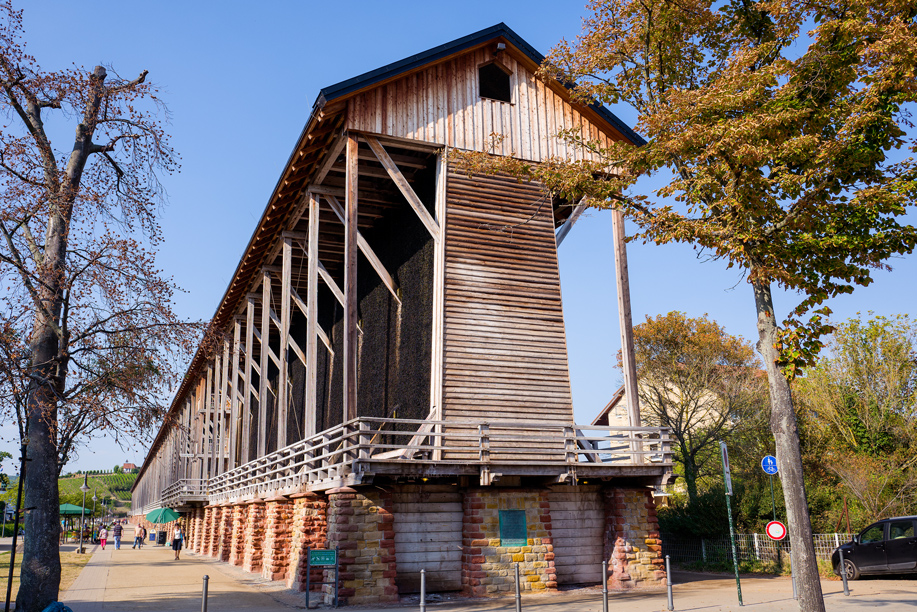Sea air in the Palatinate – how the new Saline graduation works has transformed Bad Dürkheim.
In the spring of 2007, a massive fire breaks out. Sirens wail through Bad Dürkheim early in the morning and a gleam of red light flickers ominously above the vineyards. The Saline, the graduation works located at the Wurstmarktgelände (sausage market grounds), is engulfed in flames. A good 330 metres of brushwood are ablaze. Sandstone pillars are the only remnants of the construction that had burnt down in parts 15 years ago already and that was rebuilt through hard work. “It was unbelievable, the entire construction fell victim to the fire,” head of the building control department, Dieter Petry, recalls. The next morning when he was summoned there, it became apparent it was a crime scene. Arson. The perpetrators went to prison. The brushwood burnt like tinder and hastened the fire. The last of the remaining six graduation works for which Bad Dürkheim, since 1847, had had its reputation as a salt producer and later as a salt air producer, disappeared from the townscape in a flash.
The Bad Dürkheim town council and the mayor at the time, Wolfgang Lutz, decided to rebuild it without hesitation. The council took on the ambitious task after the federal state of Rhineland-Palatinate had declined to assume any responsibility. A powerful citizenry movement arose. The project was driven forward by a support association, which had already been involved in the first fire disaster. And even today, the association under the direction of Petra Dick-Walther is first in line when it comes to maintaining the Saline. At the moment, the graduation works association is committed to raising funds for the replacement of the 160 stone pillars of the construction.
“Graduation works are unique structures,” Dieter Petry recalls of the time when the Saline had to be reconstructed. “It started in May 2009. The construction had to be rebuilt entirely. A new technique was required in order to make the salty air blow through the construction again.” Brine spraying enriches the air with microscopic salt particles. It works today in a manner true to how the original from the 18th century did – with wooden taps.











